Last but not least, part three of my digital PR tips series and the last tips I am sharing before I enter my third decade on this planet! As always these tips are aimed at all levels, some will be more helpful for those at entry level, some slightly more advanced and others are just tips for being a good human in the PR industry.
21. Don’t sell PR if it won’t have an impact
Whether you work in-house or client side, it’s normal to want to go out with amazing campaigns, win all the clients and work with exciting brands. However, in the interest of transparency, integrity and effectivity, it is important to ensure that building links is what is actually required at this particular stage in order to achieve set business goals and online objectives.
If the digital PR KPIs are tied to wider SEO goals, such as an increase in organic traffic, revenue and rankings, then building links to a site that is not optimised will achieve nothing. Ultimately this may negatively impact ROI which, in turn, will leave your client or key stakeholders questioning the value of digital PR.
If possible, get someone with SEO knowledge to take a look at the site and give it a quick health check to make sure there aren’t any problems that will affect the ability to build links. If there are issues, address how these can be fixed first.
For example, is the site optimised for mobile? Are the titles and descriptions optimised? Are there any 404s or hefty redirect paths to contend with?
Making sure the site is in the best possible condition prior to link building will benefit the client and you as a PR in the long run, as the activity will have more of an effect. The client or stakeholder will appreciate the honesty and when the site is ready, the hard work will have more of a pay off.
22. Utilise search operators
One of the hacks I personally use a lot and recommend is the site search operator on Google, and there are a few ways I like to use it to benefit my day to day.
Firstly, ideation. By taking a list of dream publications and searching their sites for common campaign style language such as “data by” “study reveals” and so on you can see what type of campaigns they cover and how they word their headlines.
E.g. site:housebeautiful.com “data by”
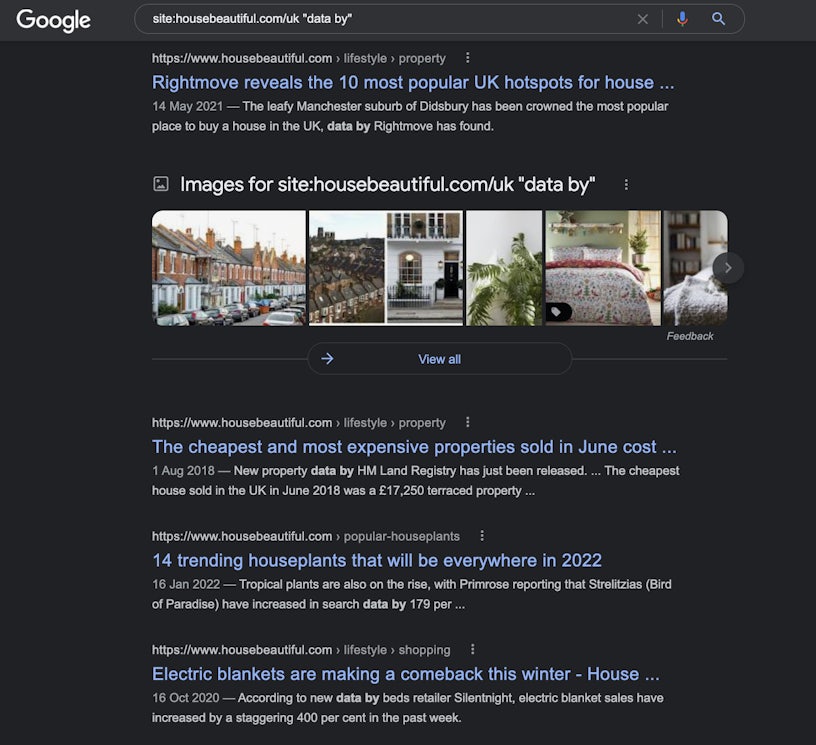
Similarly, you can also search this same list of publications for your target keywords to see what they write around your focus topics. This is also useful to see which journalists should be added to your media list for outreach.
Make sure you filter by date, giving those that have gone live in the last month or so to get the most up to date articles and therefore the more relevant journalists.
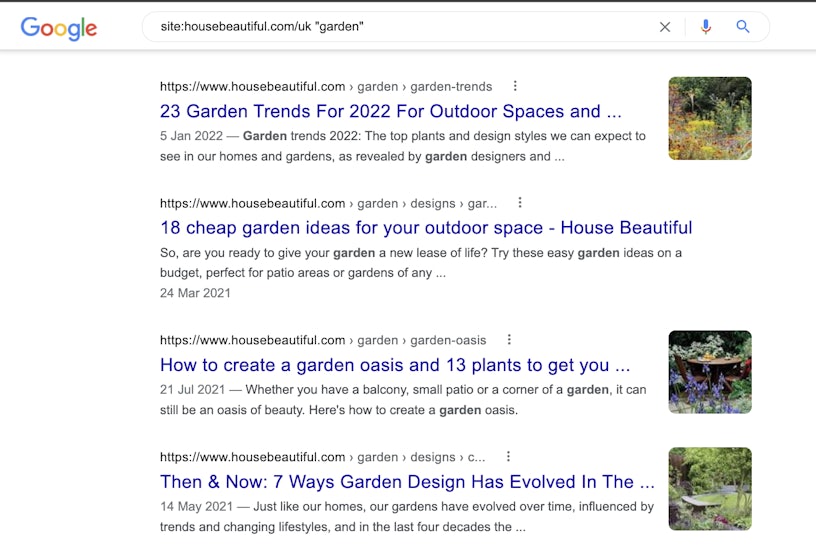
The site search operator is easy, simply put site:domain.co.uk “keyword” into the Google search bar. The start ‘site’ should always be in lower case too.
Another operator is a simple one, the use of speech marks ( “ “ ) around your keyword or term will make sure Google only shows specific results with that exact match. This is particularly handy when you are looking for coverage and you have a brand name that is too generic. For example, if a brand was called BooksOnline, the company will appear in the SERPs when searching for this term, but the search is also likely to bring up all articles and sites that contain these two words in other contexts too. Instead, looking for “BooksOnline” with the speech marks will only bring up results featuring that specific search.
Using a hyphen ( – ) in your searches is also handy if you want to exclude certain words from a search. For example, if you are looking for journalists that write about ‘tips’, you may get unrelated sports content (particularly around racing events) by using ‘tips -cheltenham’ or ‘ tips -Grand National’, you can make your search more relevant to you
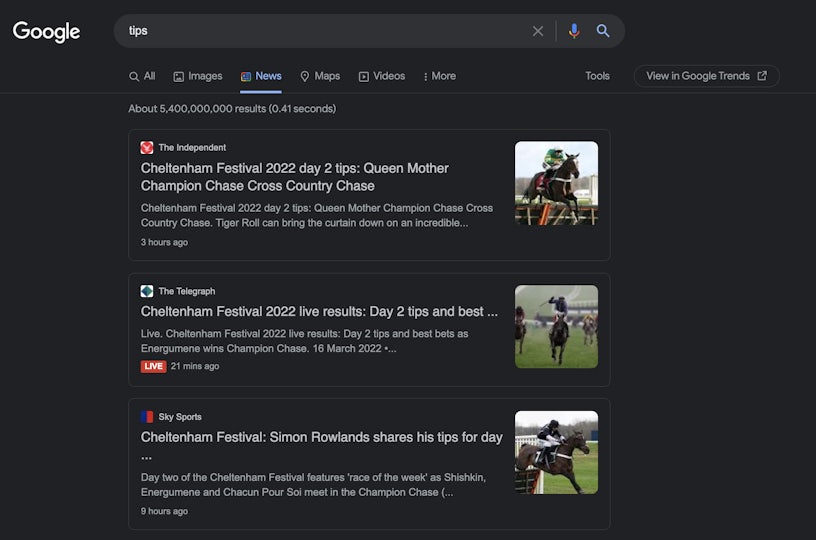

There are loads more too which can be found in a post Ahrefs have put together here: https://ahrefs.com/blog/google-advanced-search-operators/
23. Don’t fudge data, if you can’t get a story from it scrap it
Data is a tricky beast, especially if it is coming from something that budget has been used for, such as a survey. There is a possibility that the data comes back and there is no story, no shocking stat, no hook. It can be devastating when this happens, but it is not worth making it up just for a story and risking your integrity and damaging trust between you and your client/the stakeholders.
There are other paths you should explore before you scrap it altogether though.
Firstly, make sure that you have looked at the data in detail. Is there any demographic split you can look at, as a group the results may be boring but what about an age split? Is there a regional difference you can focus on? Don’t take a top level analysis as gospel.
If you have looked into it more and the data still isn’t newsworthy, would some additional research or data give a story in conjunction with the data? Can you take something from Instagram, Pinterest, Tik Tok or an open data source to help create a story? Is there a trend that compliments the findings?
If the answer is still no then the best course of action is to scrap that idea and move on to something else before any more work is put into it. Flogging a dead horse is not a nice feeling as a PR, it can be completely demotivating and confidence crushing, so stopping this campaign before it gets to that point is the best option.
Just don’t fake it. Being called out for dodgy data won’t feel good either and will tarnish your reputation in the process.
24. Make your methodology clear and note your sources
This next tip is relevant to the one above. It is vital that when you are dealing with data that your methodology is clear and all of your original sources are stated. This will allow the journalists to have confidence publishing your campaign, as well as give them a reason to add a link too.
What methodologies are required for different types of campaigns?
Survey
The methodology for a survey will be short, just include the basic demographic information (such as age range, genders, location and any specific criteria such as job role, marital status too if used), what was the length of the survey (how many questions) and the number of respondents. If you used a market research company such as Pollfish or Censuswide, you can include their name in the methodology too as it gives transparency over where the results came from.
Google searches
The methodology for an Google searches campaign should include:
- The territory – was it worldwide searches, UK, USA?
- The terms used – for example, if you are looking fo the most coveted celebrity skin you would search “[celebrity name] skincare”, “[celebrity name] skin regime” and so on for a thorough result
- Over what time period is the analysed data from (per month, per year) and whether any results have been omitted due to one reason or another
- When the study was conducted to account for any changes to the data since outreach started
Larger data campaigns
For a bigger data campaign that contains multiple sources of data, the original sources should always be linked to on the campaign page to allow for the journalist and their readers to check if needed.
It is also good practice to add the methodology to the press release too so the journalist can see the data is legitimate and the methodology is solid off the bat, they are the ones that will take the flack if it is weak or incorrect which will ruin your relationship with them.
25. Test your subject lines and keep them short
There is a lot of pressure to get a campaign out fast and to as many people as possible which can make it tempting to bulk send to a huge list of contacts. What this means though is that you are literally putting all of your eggs in a one subject line basket, and if this subject line achieves low open rates, it is going to affect the results of the activity.
When planning to outreach an angle, come up with a few different subject lines straight away. These don’t have to be wildly different, just a few variations using different popular formats will give your outreach a safety net.
Once you have a few variations of subject lines for each angle, test them on 20 to 30 contacts to start with and analyse the open rates after the first 24 hours. If one has done significantly better than the others, make this your primary subject line for this angle.
Also, as well as the tip from Part One of not making your subject lines too click-batey, make sure they aren’t essays too. Subject lines are on average 25-60 characters (not words!), more than this will usually be truncated, leaving the journalist with little information about the emails contents, and bear in mind even less of the subject line will appear on mobiles.
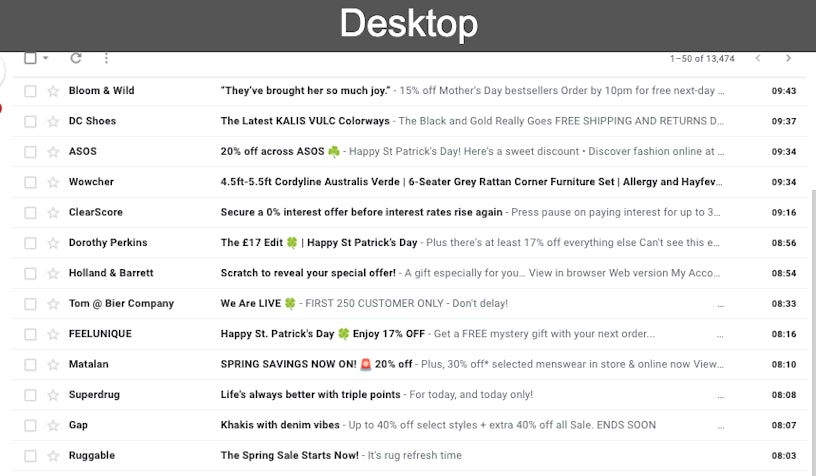
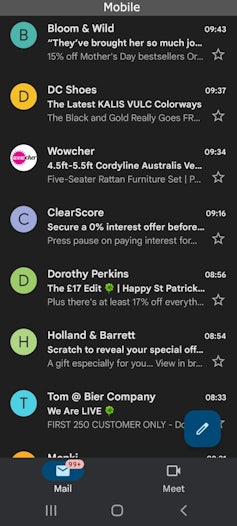
Keep your subject line punchy and don’t forget to put anything important at the beginning. If you are outreaching a regional piece, ensure the location is visible so the journalist knows the piece is relevant to their publication and if you are outreaching data, ensure the key statistic is visible and so on.
For example:
London is the best city for women in tech, study reveals
76% of Brits prefer dogs over humans
Some even choose to put what the focus of the email is in square brackets at the front of the subject line to make it very obvious.
For example:
[Data] Two thirds of Americans eat cheese in bed
[Video] How to use white vinegar to clean your whole bathroom
26. Respond to rejection, a no this time isn’t a no forever
It is gutting to get a rejection email from a journalist. After days/weeks/months of preparing a campaign you obviously want it to do well. However, there is only so much you can do, a huge part of a PR professional’s success is down to luck and if a journalist isn’t interested it isn’t (always) a reflection on the work you have done.
Of course it would be great to hear back from everyone we outreach to, but with full inboxes and busy writing schedules, it isn’t always feasible for journalists to respond to you.
Therefore when you do get an email rejection, be sure to reply. The person at the other end has obviously taken the time out of their day to personally email you so it is only polite that you thank them for the feedback. Manners don’t cost anything and go a long way in an industry that relies on others to get results.
A no now isn’t a no forever, if they have rejected this piece but you remain polite and thankful for their time, they are more likely to remember your name later on, and who knows, the next piece may be a yes. You may be able to even ask if they are looking for anything in particular that you could help them with too.
27. Know your client/brand
One of the main pillars of good PR is relevancy. Everything that is put out on behalf of a brand should directly tie to what they do and be aimed at their target audience. If the brand is a B2B computer software company and you outreach a campaign about which dog breed is the most instagrammable, you have missed that relevancy mark. Your peers will know it, the client will know it and Google certainly will too.
This is why understanding the industry that you or your client operate in is vital for results that will give a better ROI and help achieve the KPIs. Research their website, previous coverage, their blog/resources, look at their backlink profile, their social media accounts, the keywords they are ranking for, what their website visitors are searching for in their site search bar and their most recent features in the News (search in Google News “the brand name”).
Research what is trending in this particular industry? What questions are people asking? What does the competition look like and what are they doing?
In order to properly create campaigns, content, reactive comments that will move the needle on keyword rankings and increase online visibility, you need to put relevancy first.
28. Find the data before pitching the idea
I cannot stress how important it is to validate ideas as you go. If I have an idea that involves data, I always make sure the dataset exists or can be asked for long before it makes it into an ideation document or deck.
There is nothing quite like pitching an impossible idea to a client to break down confidence and trust in the relationship. Sometimes it even helps to work backwards for data-led ideas. Find a campaign you like that has been done in the past, go to their methodology and see what their data sources were. Have they been updated since this campaign went live? Are there new ways to frame this data?
Or if you follow which data sources are being released, use them as your inspiration for ideas.
Bookmark good data whenever you see it, whether it is relevant at the time or not. This gives you a bank of data sources that you can access the next time ideation comes around.
Utilise wider technical team members too. Not every PR team is lucky enough to have a data whizz or even a specific data team on hand, but it is likely the technical SEO team or developers will have a knack for data so if you want something specific and need to know if it will be possible to scrape a site for that data set or want to know if there is another way that data can be obtained, don’t be afraid to ask, there are even a lot of helpful people in the Twitterverse nowadays that are happy to knowledge share.
Hannah Bednarova at her last BrightonSEO talk gave a list of great data sources too:
- https://www.ukhospitality.org.uk/page/Reports
- https://commonslibrary.parliament.uk/research-briefings/cbp-9111/
- https://www.statista.com
- https://www.ons.gov.uk
- https://www.govgrant.co.uk/
- https://www.hse.gov.uk/agriculture/
- http://www.daera-ni.gov.uk/
- https://www.artscouncil.org.uk/
- https://www.local.gov.uk/
- https://cic.org.uk/
- https://www.hse.gov.uk/
- https://www.gov.uk/contact-dfe
- https://explore-education-statistics.service.gov.uk/find-statistics
- https://www.fca.org.uk/
- https://www.ofcom.org.uk/home
- https://www.makeuk.org/
- https://www.parliament.uk/
- https://www.ofwat.gov.uk/
- https://www.acs.org.uk/
- https://www.imrg.org/
29. Utilise existing content
An easy life is what most people strive for, so why create unnecessary work for yourself if a collection of great content that can be reworked and used as a piece of planned reactive content already exists
Jess Peace, content whizz for Content Team Lead Neomam (and all round awesome human) gave this piece of advice: “Assess current [client/brand] content. Export content titles to spreadsheet and use conditional formatting as a traffic light system to analyse existing on-site content to pick out high performing pieces. Green= highest traffic and time on page, red=high bounce rate and exit rate.”
This is a great way to judge what pieces are considered to be the most interesting and therefore more likely to pique the interest of the journalist you outreach the piece to.
Remember not to just copy and paste the existing content into an email and outreach, it should be tailored to suit the press, have no salesly links and most likely be more concise than the content on the company website.
It is likely the content may need a refresh or a new hook too, such as up to date data or a trend to make it relevant to now, but this will be a lot less work than ideating new titles and writing entirely new pieces.
30. Champion GOOD campaigns
In a world where there is so much bad stuff in the news, it is our job as PR professionals to champion the good. Of course not every campaign can be good news, but it is important that we don’t take advantage of or leverage bad news for professional gains, as well as being insensitive.
Let’s take, for example, the current war between Russia and Ukraine. This is an extremely serious matter, everyone is scared, and rightly so. We have just come out of two years of facing a global pandemic (it isn’t gone at this point of course but we are ‘living with covid’) and now we are facing something else that is out of our control. Something we cannot personally affect or stop, leaving many feeling powerless and anxiety ridden, not to mention those that are actually, physically being affected by it.
It should be obvious that this isn’t an opportunity to get links, however, a piece was published in a national publication about which cities or UK locations are least likely to be affected from a nuclear attack. Now, for context this campaign is not new, it is an old campaign done at a time when there was no real threat of an attack, but was it outreached by the company or by an agency in the hope of achieving a link? We would hope not. It does, however, highlight an important point that yes, we all want a link, but our integrity and empathy shouldn’t be the price we are willing to pay.
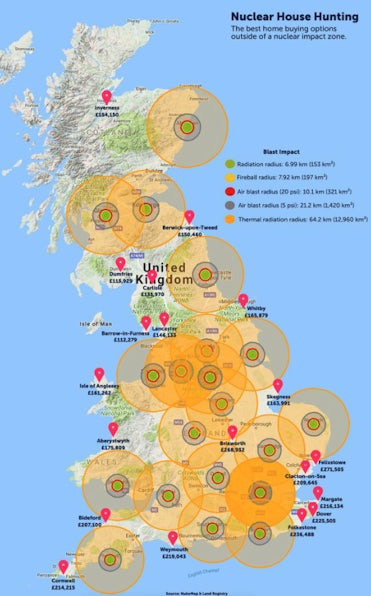
My wonderful colleague Rebecca Tee recently wrote a post about PR campaigns for good, and how we should be pledging to create meaningful campaigns in 2022. I couldn’t agree more. PR Professionals provide news outlets with huge amounts of stories and data, so why not try and do something good with that space in the press?
Can you run a campaign that highlights an inequality (in race, sexual orientation, gender)? Can you run a campaign that promotes something positive, brings about change for good, or gives back? We in the PR industry need to take some responsibility for what we are putting out there. Be a positive force.
Thank you so much for taking the time to read the tips I have shared in this series, if you missed them part one and part two can be found on the blog too.
As always if you have any questions I am always happy to help, you can either tweet me at @oh_my_gemma on Twitter or message me on LinkedIn here!



